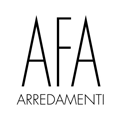The format is that of “slow-fast-food“, which aims at a single dish, genuine and high quality: in this key, the Italians like the hamburger. But what are the fundamental success factors for exhibitors?
WHAT YOU NEED TO OPEN A HAMBURGERY
There are 5 characteristics to pay particular attention to be successful in this type of market:
- Ingredients
The first step is to find ad hoc recipes. Because you can not improvise to be preferred to pizzerias and cafés at noon and make their way as an evening choice, suitable for an audience between 20 and 50 years. Every detail must be taken care of: even the type of bread, for example, looking for the most suitable one to not let the tomato sauce fall. Or experimenting with the ideal type of cooking for each meat quality: a winner who knows how to range beyond the classic beef and propose novelties, based on veal and other, strictly first choice and zero kilometer. A little imagination is also necessary to elaborate alternative recipes and to propose a menu that is not only monothematic, distinguishing its format from the competition for quality and originality of the offer.
2. Location
If the area where you want to open a burgundy is attended mostly by students, inclined to quick meals or to bring food home, a shop without seats is more than suitable. The question is different if there is a large concentration of offices nearby and therefore people wanting to have lunch at a table, or tourists looking for a place to eat calmly. In general, the minimum area of the room is similar to that of a pizza-free activity without tables, which focuses on a take-out proposal.
Once the size has been established, consider furnishing: it must adapt to the image of the chosen format, because the inconsistency between the various elements can lead to failure of the activity. The choice of furniture depends on the context (historic center, shopping center, tourist area, hotel, etc.), the type of clientele to which it is addressed and the type of service proposed. In a wide location it is possible to evaluate the inclusion of an area with an open kitchen, much appreciated by consumers.
- Equipment
To open a restaurant you need a kitchen equipped with work surface and washing area, a professional plate for cooking meat, a large refrigerator to store raw materials and possibly a warehouse to store non-perishable goods.
Crockery and accessories should be coordinated with the furniture, the ideal would be to personalize them with the name of the room, so as to suggest a well-defined style. Among the various suppliers, CHS Group customizes slate trays, wood cutting boards and glassware thanks to a laser printing service. To know then that with the tampo print it is possible to print your own brand also on disposable items. Objective: to be as recognizable as possible.
The packaging customization services of CHS Group Service
4. Service
At a bureaucratic level, it is possible to open a business in the form of an individual company, company or family business. For regulatory constraints, the artisan company can offer the only service for the production and sale of take-away sandwiches. The case of the commercial enterprise is different, which can offer a catering service inside the premises.
In general, the rooms dedicated to hamburgers are open every day of the week, from midday to late evening. Necessary at least three people for the management: one in the kitchen, one at the cash desk and one that is divided between the two spaces
- Prices
Prices The price of the hamburger is usually higher than that of fast food because of the high quality of the raw materials used, which also attract consumers who are attentive to organic and healthy foods.
The average receipt should not exceed € 15-16, including drinks. Higher, it may scare consumers and make them turn to cheaper proposals. After all, always talking about a sandwich. The classic customer-catcher strategies always work: combo menus, offers of the month, loyalty cards …
CASES OF SUCCESS IN ITALY
Among the various examples we can mention M ** Bun, a chain that owes its name to an expression of the Piedmontese dialect (Mac Bun means “only good”). The format, devised by Francesco Bianco and Graziano Scaglia, offers 7 different burger recipes based on Piedmontese meat, tartare, tome, sweets, wines and beers produced in the area.
Then there is Ham Holy Burger, immediately to the honor of the news for the order entrusted to the iPad (we have already seen the winning use of technological tools in a previous article).
In Bologna there is instead Well Done Burger, which chooses only organic ingredients. The reason is early: the product is of higher quality than the classic fast food. Because the meat is chosen and the short supply chain (creation, transformation, distribution …). While other paper foods, from potatoes to sauces, have a high added value: call for preservatives, thickeners, frozen foods…
The same philosophy was adopted by a local inaugurated in Forlì a few months ago, Amburgheria Creativa, which eliminated the initial acca in its own name to underline the choice of products at km0. For the sandwiches are used only vegetables of the farmer of trust and resources of the territory, indicated directly on the paper. The menu also advises customers “the bread that best fits with the ingredients inside”, as well as the right beer for every burger.
- Author: Giancarlo Fina
- Sharing Tourism



